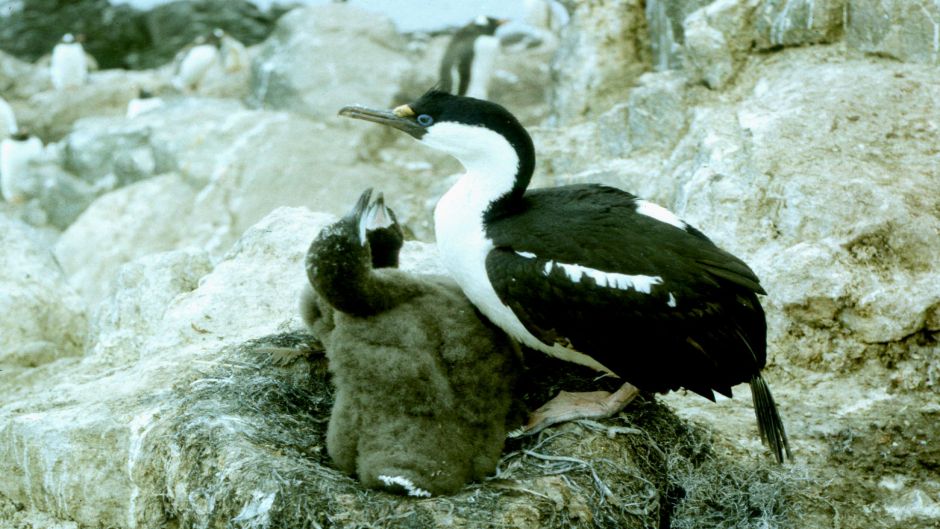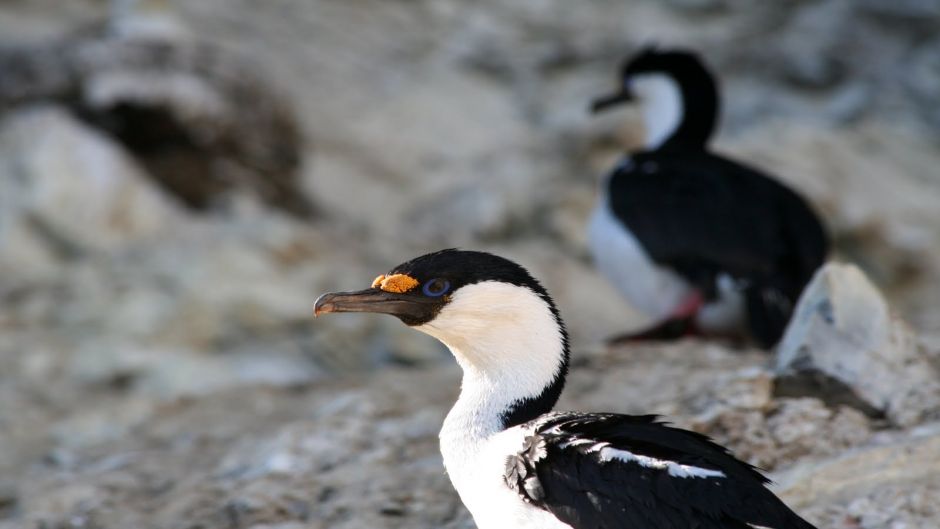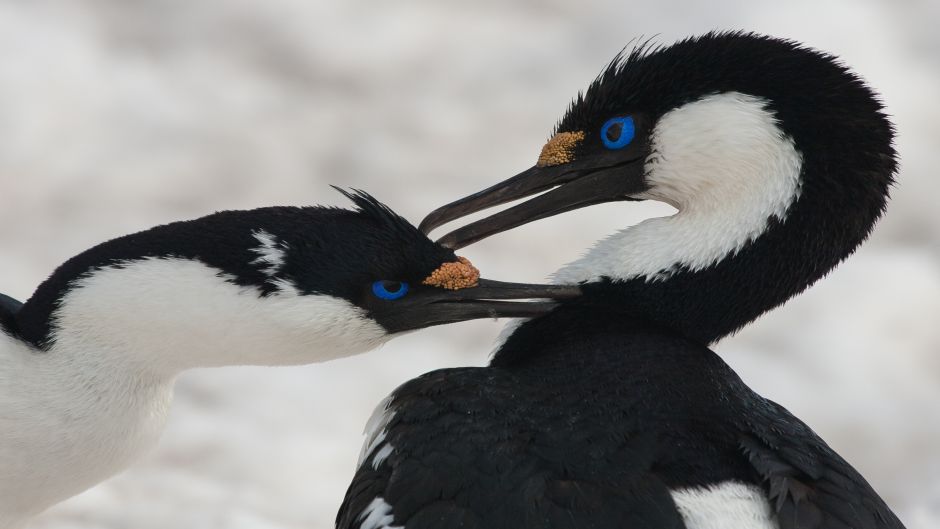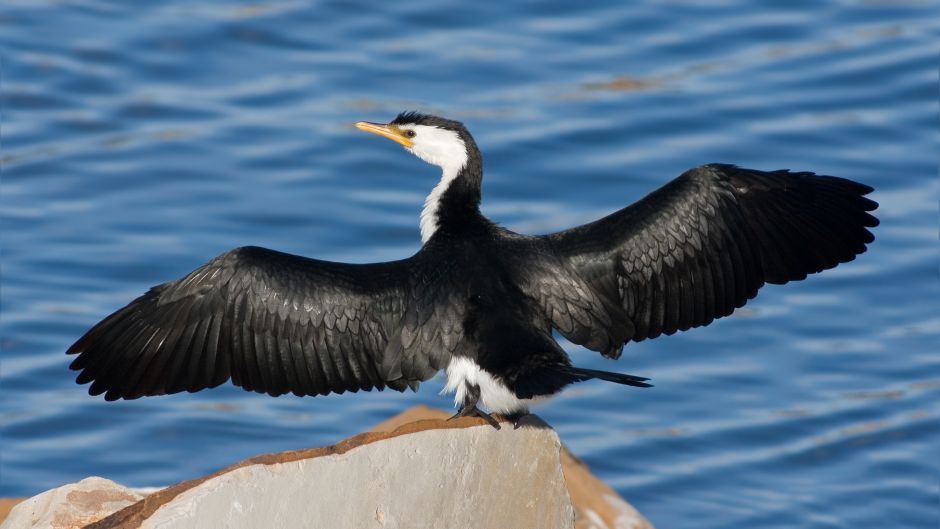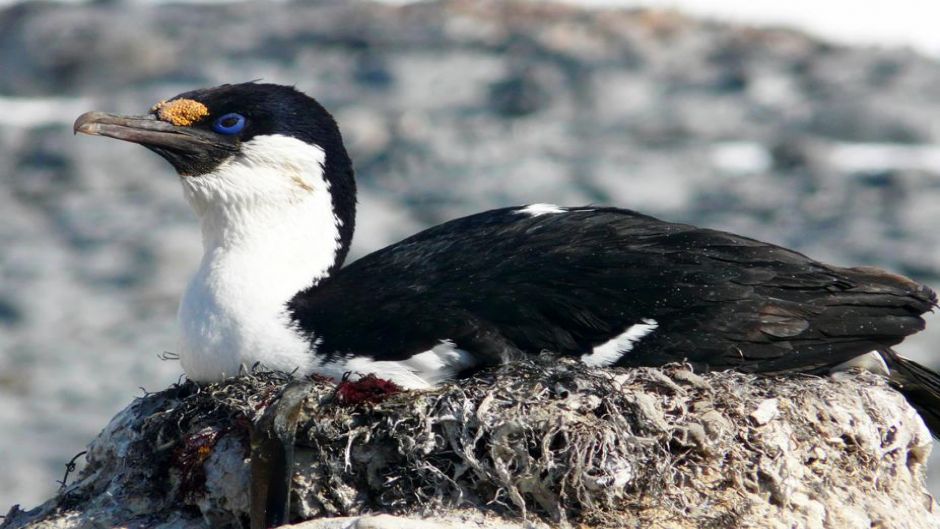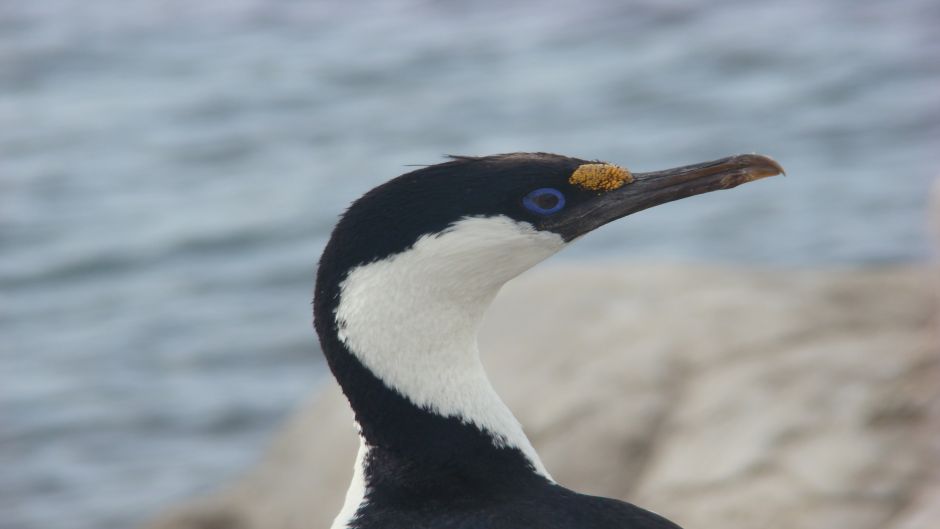Antarctic Cormorant
Familia:
Phalacrocoracidae Genero:
Leucocarbo Nombre Cientifico: bransfieldensis
Its scientific name is Phalacrocorax bransfieldensis.
Cormorants Phalacrocoracidae belong to the family; the only species classified southern latitudes is the Antarctic Cormorant or blue eyes (Phalacrocorax bransfieldensis).
All species have a blue, purple, red or periocular ring, but always the iris is blue. Other shared features include the white underparts and legs color rosa.2
Unlike most aquatic birds, their feathers are not completely waterproof, so when wet, they make you gain weight, allowing them to sink deeper and dive with ease. Once on the ground, they spread their wings to dry. In addition, they regulate the volume of air sacs.
Truly like a duck. It measures about 70 cm. long; short wings of only 30 cm .; tail of 12 cm .; cylindrical peak of 5 cm. with downward curve at the tip; legs of 5 cm. with webbing; long neck; coat of black back, white ventral area.
They breed in the South Shetland Islands and parts of the Antarctic Peninsula, in small populations inaccessible to humans. Sometimes nest in the vicinity of the penguin colonies. They are very sociable.
They build their nests in a tower using mud, algae and other materials. They usually have up to 2 chickens which feed by regurcitación their stomachs.
Food is mainly fish fishing in depths up to 25 m. because they are excellent swimmers; ingest once they caught on the surface. They also consume cephalopods, krill, bivalves, etc., depending on the period of reproduction and the season.
Countries where lives Cormorán Antártico
ARGENTINA
CHILE
